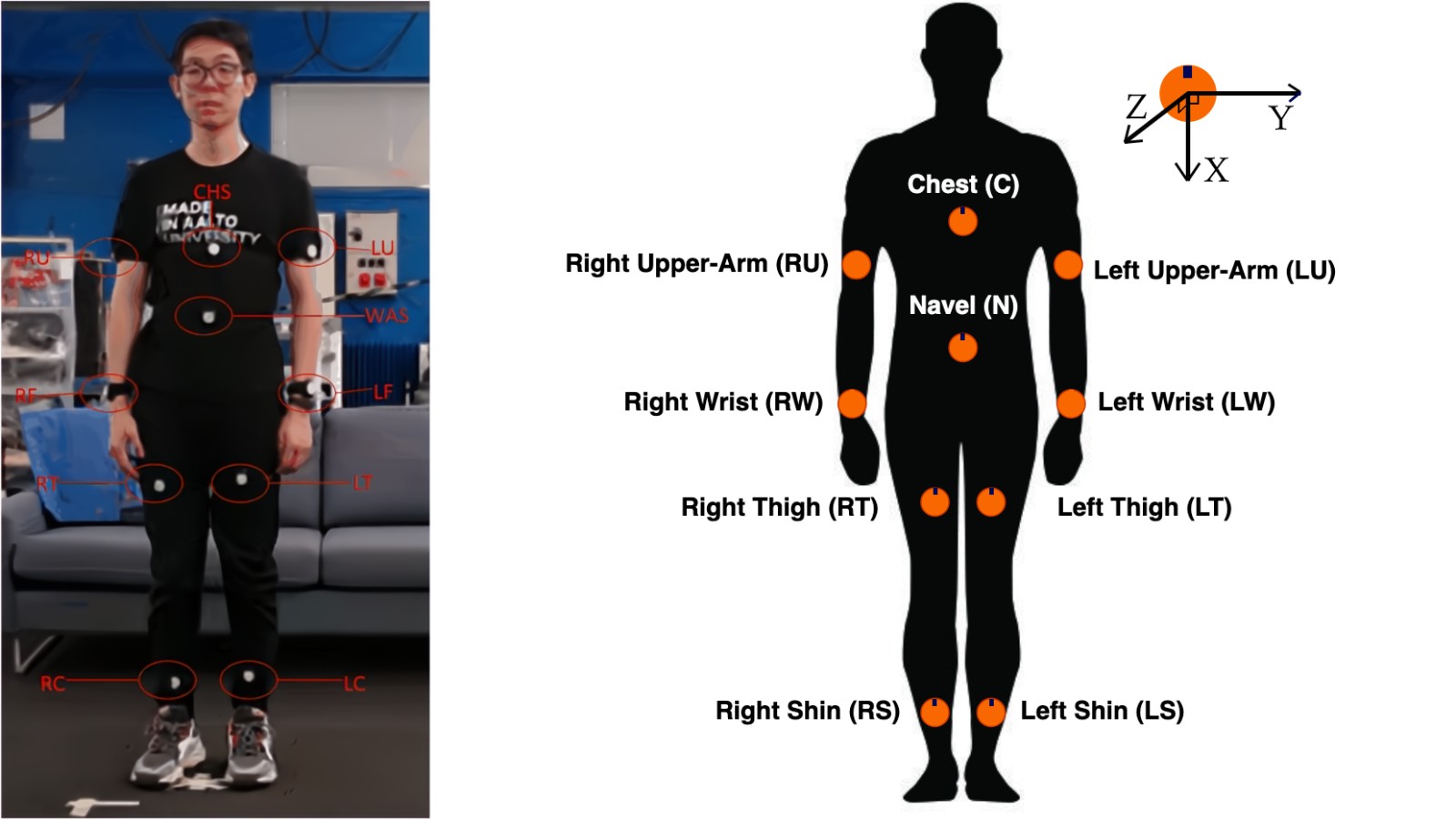New Open IMU Dataset “StrengthSense” Captures Everyday Movements with 10 Movesense Sensors — Ideal for Movesense Developers

Researchers of Aalto University, Espoo, Finland, have published a new open IMU dataset titled StrengthSense: A Dataset of IMU Signals Capturing Everyday Strength-Demanding Activities, a valuable resource for Movesense Developers. Aalto Wearable Systems Lab scientists Zeyu Yang, Yu Xiao, Sara Kutkova and Clayton Leite shared the results of their work via the open EU research platform Zenodo. (DOI: 10.5281/zenodo.17424677)
The dataset was collected using ten body-mounted Movesense HR+ sensors, strategically placed on the chest, waist, upper arms, wrists, thighs, and calves—and includes 13 common daily activities and exercises such as sit-to-stand, walking with shopping bags, climbing up and down stairs, push-ups and squats.
— My group concluded that there was a notable lack of relevant IMU datasets including daily activities that involve strength-demanding exercises, particularly those with IMUs positioned at various body locations. Such datasets would be very useful for identifying optimal layout suitable for monitoring in free living environments, says team lead Yu Xiao.
— In contrast to many existing datasets, StrengthSense encompasses a relatively large number of subjects and activities, along with extensive sensor coverage across the body. The accuracy and reliability of the dataset have been validated by comparing the joint angles estimated by IMUs with those extracted directly from videos. The dataset holds potential for a variety of applications, including solutions related to cross-subject performance degradation, sensor placement optimization, continual learning, synthetic data generation, and more, Xiao continues.
This publication presents a major opportunity for developers working with Movesense sensors on topics related to motion measurement. The richly annotated 9-axis IMU data, structured in CSV format and organised by subject and trial, provides an excellent benchmark for movement recognition, posture classification, load-carrying detection and more.
For the Movesense ecosystem, this dataset brings three key advantages:
Pre-labelled, real-world everyday activity data: With 29 participants aged 18-60, the dataset covers a broad demographic performing daily strength-demanding tasks.
Open-access and reuse friendly: The data is released under a Creative Commons Attribution 4.0 license, making it freely available for research and development.
Ideal for various sensor configurations: Collected with 10 sensors placed at key locations on the body, the underlying IMU signals (accelerometer, gyroscope, magnetometer) are well suited to adaptation on a single or many Movesense sensors, enabling teams to build, train and validate movement recognition models with strong ground truth.
Developers using Movesense hardware and SDKs can harness this dataset for tasks such as: training classifiers for strength-related movement events, validating algorithms for load-carrying detection or fatigue estimation, and benchmarking new sensor placements or sensor fusion techniques. The dataset’s structure and clear documentation make it straightforward to integrate into machine learning workflows.
To access the dataset, visit Zenodo at the DOI above. Be sure to review the included Readme document for folder structure and usage guidelines. For Movesense developers looking to accelerate motion-analytics innovation, StrengthSense offers a valuable resource and starting point.
